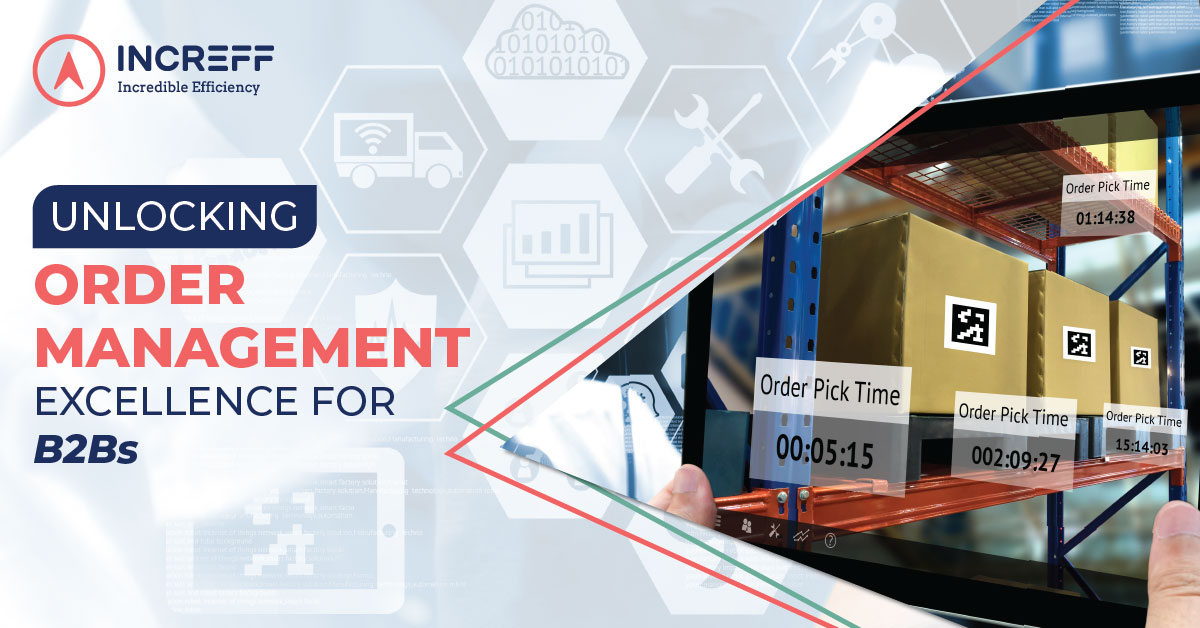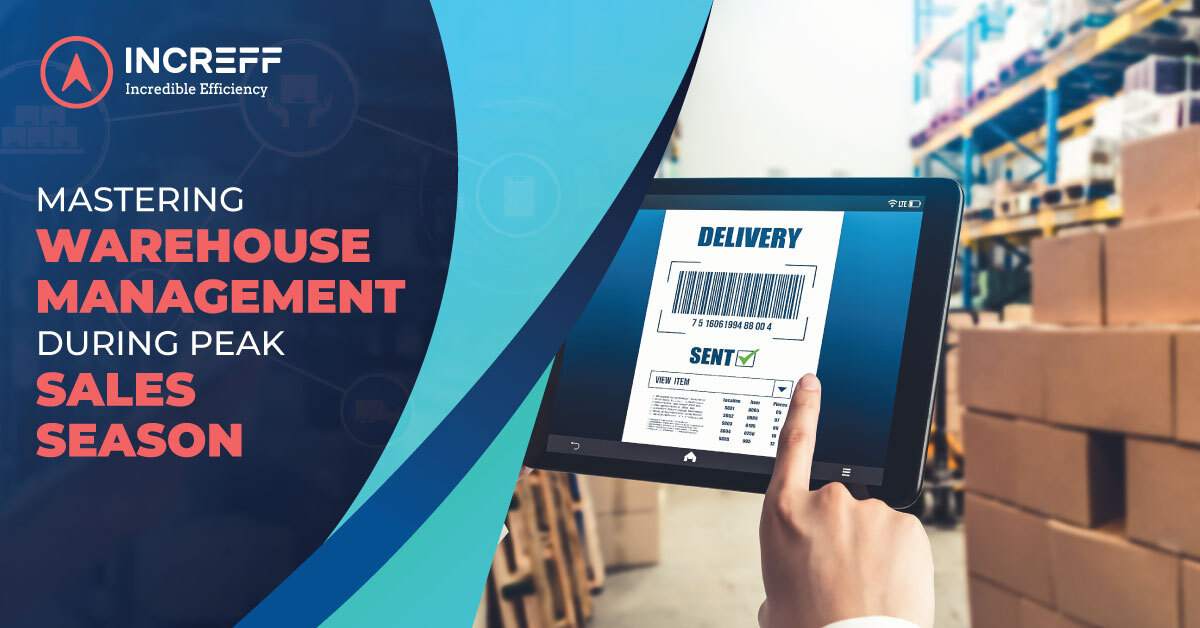
WWarehouse Management
5 B2B Order Management Essential Capabilities You Can’t Ignore
Gone are the days when B2B customers were content with a lackluster experience. The tide has turned, and B2B buyers now crave the same level of satisfaction they receive as consumers. Surprisingly, the B2B Future Shopper Report 2023 reveals that a staggering 46% of B2B buyers feel frustrated with their online purchasing encounters. What’s more alarming is that 40% of global B2B buyers have ditched their suppliers in the past year alone. It’s evident that the world of B2B commerce is evolving rapidly, with B2B e-commerce projected to skyrocket to a whopping $3 trillion by 2027.
In this transformative landscape, traditional methods just won’t cut it. Manual processing, spreadsheets, and outdated legacy applications or ERPs designed for back-office tasks can no longer meet the demands of B2B order management. To succeed, companies must embrace a new approach—one that encompasses flexibility, agility, scalability, customization, intelligent decision-making, real-time inventory visibility, and customer-centric capabilities.
For B2B organizations, it’s high time to reevaluate their approach to order management. In this blog, we will explore five essential order management capabilities that no B2B supply chain can afford to overlook.
5 key features a B2B Order Management Solution
Real-time Inventory Visibility
A comprehensive order management system should provide real-time visibility into inventory levels across multiple locations and channels. This capability ensures timely restocking, prevents stockouts, and avoids overstocks. By implementing centralized inventory management, businesses gain a unified view of their inventory, allowing quick assessment of stock levels, monitoring replenishment needs, and tracking product movement. Enhanced visibility enables proactive inventory management, minimizing stockouts and overstocks. Real-time updates ensure accurate inventory counts, enabling reliable information for selling systems. Balancing customer satisfaction and cost control ensures the availability of the right products when customers need them.
Real-time Order Tracking
Real-time order tracking is a fundamental capability in B2B order management, delivering transformative benefits. It provides visibility and transparency throughout order fulfillment, reshaping business operations and customer interactions. With real-time order tracking, businesses boost customer satisfaction, proactively resolve issues, ensure timely delivery, optimize operations, and improve communication.
- Customer Satisfaction: Real-time order tracking provides B2B customers with visibility and transparency, leading to increased satisfaction and confidence in the buying process.
- Proactive Issue Resolution: Businesses can quickly identify and address any potential issues or delays in order fulfillment, allowing for proactive communication and problem-solving to maintain a smooth customer experience.
- On-time Delivery: Real-time order tracking enables businesses to closely monitor orders, ensuring timely delivery and meeting the strict timelines and dependencies of B2B customers.
- Operational Efficiency: Access to real-time tracking data allows businesses to analyze their order fulfillment processes, identify areas for improvement, streamline workflows, and optimize resource allocation, leading to improved operational efficiency.
- Effective Customer Communication: Real-time order tracking facilitates accurate and timely updates to customers regarding order status, shipping information, and estimated delivery times, enhancing transparency and minimizing customer inquiries.
Unit of Measure (UOM)
This is a crucial aspect of inventory management in a B2B OMS because it enables efficient shipping of inventory in bulk and facilitates seamless stock transfers. Here are several reasons why UOM is important in this context:
- Bulk Shipping: Many B2B transactions involve large quantities of products being shipped from one business to another. The UOM allows for standardization and consolidation of inventory units, enabling efficient packaging, handling, and shipping of goods in bulk. Instead of shipping individual items, which can be time-consuming and costly, businesses can optimize logistics by grouping items into larger units of measure (e.g., pallets, cases, or cartons).
- Accuracy in Stock Transfers: When businesses transfer inventory between different locations or warehouses, having a consistent UOM ensures accurate and seamless stock management. Each location can have its own preferred UOM for receiving and tracking inventory, ensuring compatibility and minimizing errors during transfers. It simplifies inventory reconciliation and reduces the risk of discrepancies or misunderstandings between the transferring parties.
- Inventory Control and Replenishment: Effective inventory management relies on accurate tracking and control of stock levels. UOM helps businesses accurately measure and monitor inventory quantities, facilitating timely replenishment and preventing stockouts or excess inventory. By setting reorder points and utilizing UOM-based inventory control methods, businesses can optimize their supply chain, improve customer service, and reduce carrying costs.
Integration with Partners and Suppliers
B2B supply chains require seamless integration with partners and suppliers for effective collaboration. An ideal order management system supports standardized communication protocols like EDI and APIs, enabling real-time data exchange. Integration enhances supply chain visibility, optimizes demand forecasting, and reduces lead times, enabling businesses to respond swiftly and improve performance.
Managing partner codes for B2B marketplaces and ERPs is crucial for seamless integration. These codes serve as unique identifiers, allowing accurate tracking and differentiation. By assigning partner codes, the system efficiently manages orders, inventory, and data associated with each partner. Mapping these codes to external systems establishes a reliable connection.
Partner codes streamline order processing and fulfillment by quickly identifying associated partners. This enables efficient order routing and accurate inventory allocation. Automatic application of pricing and contract terms based on partner codes ensures consistency and reduces errors.
Pool-Based Inventory Exposure and Allocation
In a B2B Order Management System (OMS), the use of pool-based inventory exposure and allocation brings numerous benefits, that include
- Optimized Inventory Management: Pool-based inventory exposure ensures efficient allocation of inventory across B2B sales channels, preventing overstocking and stockouts while maximizing utilization and reducing carrying costs.
- Fulfillment Flexibility: Reserving inventory specifically for B2B sales channels guarantees availability for fulfilling B2B orders, meeting the unique needs and preferences of B2B customers, such as larger quantities or specialized products.
- Improved Order Accuracy and Efficiency: Pool-based inventory allocation streamlines order processing, reduces errors, and minimizes overselling by providing accurate inventory tracking and dedicated allocation for B2B sales channels.
- Enhanced Customer Experience: B2B customers benefit from improved product availability and reliable order fulfillment, leading to higher satisfaction, stronger relationships, and repeat business.
- Scalability and Growth: Pool-based inventory management supports business scalability and growth by efficiently allocating inventory across multiple channels as B2B operations expand, avoiding bottlenecks and optimizing operations.
By investing in a good OMS that offers these capabilities, B2Bs can improve their order management processes, increase customer satisfaction, and boost their bottom line. But, it is important to note that regardless of whether the business operates in a B2B or B2C environment, there are several key features that a good Order Management System (OMS) should possess. These features not only enhance operational efficiency but also contribute to the overall success of the business. Some of these essential capabilities include:
Routing and Splitting: A robust OMS should have the ability to intelligently route orders to the most suitable fulfillment centers or distribution channels. It should also support order splitting, allowing the system to divide orders with multiple items and fulfill them from different locations if necessary.
Omnichannel Order Handling: With the rise of multichannel selling, an OMS should be capable of seamlessly managing orders from various sales channels, such as online stores, marketplaces, and brick-and-mortar locations. This ensures a consistent and unified customer experience across all touchpoints.
Returns and Exchanges Management: Handling returns and exchanges can be a complex process, but a good OMS should have built-in capabilities to efficiently manage these scenarios. It should provide easy return initiation, automated refund or exchange processes, and real-time visibility into return statuses.
Fast Inventory Synchronization: Timely and accurate inventory updates are crucial to prevent overselling and stockouts. A reliable OMS should offer real-time inventory synchronization, ensuring that inventory levels are accurately reflected across all sales channels and preventing discrepancies.
Seamless Integration: A robust OMS seamlessly integrates with e-commerce platforms, webshops, and multiple WMS. This enables smooth syncing of product information, order details, and customer data, ensuring effective order management. Integration with various WMS platforms optimizes inventory management, order routing, and fulfillment across multiple locations, enhancing operational efficiency.
Store Fulfillment Options: In an omnichannel environment, where businesses may have physical retail stores alongside their online presence, an OMS should facilitate store fulfillment options. This allows customers to place orders for in-store pickup or ship-from-store, providing greater convenience and flexibility.
By incorporating these key features into their OMS, businesses can establish a strong foundation for effective order management, regardless of whether they operate in a B2B or B2C setting. These capabilities empower businesses to streamline their operations, enhance customer satisfaction, and ultimately drive growth and success in the increasingly competitive marketplace.
7 July, 2023
RRegional Utilization
Riding the E-commerce Wave: Prepping for Peak Season…
The holiday season is the busiest time of the year for e-commerce brands. With the…
30 October, 2023
6 months agoWWarehouse Management
A more fulfilling season with retail’s dynamic trio:…
The festive sales season always brings a whirlwind of activity, and in the midst of…
27 October, 2023
6 months agoWWarehouse Management
How to Streamline Your Warehouse Operations During Peak…
The holiday season is here, and we all know what that means—sales and discounts! Both…
25 October, 2023
6 months ago



